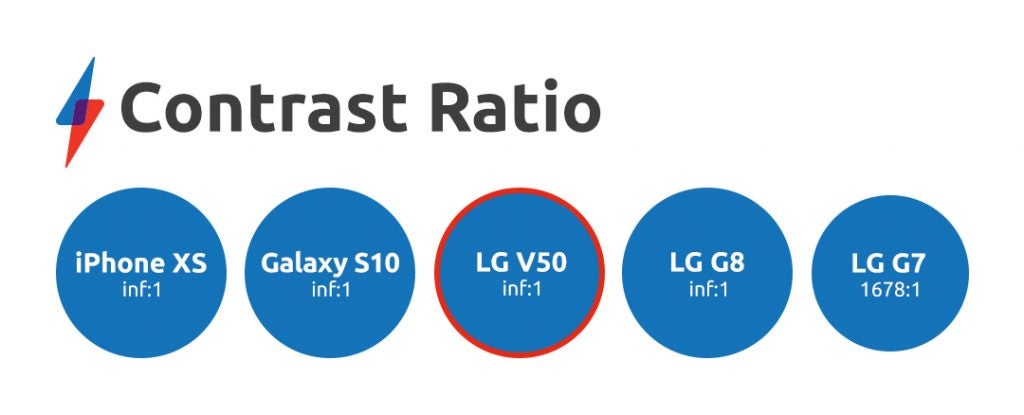LG V50 ThinQ Review - Screen Review
Screen
LG V50 screen review
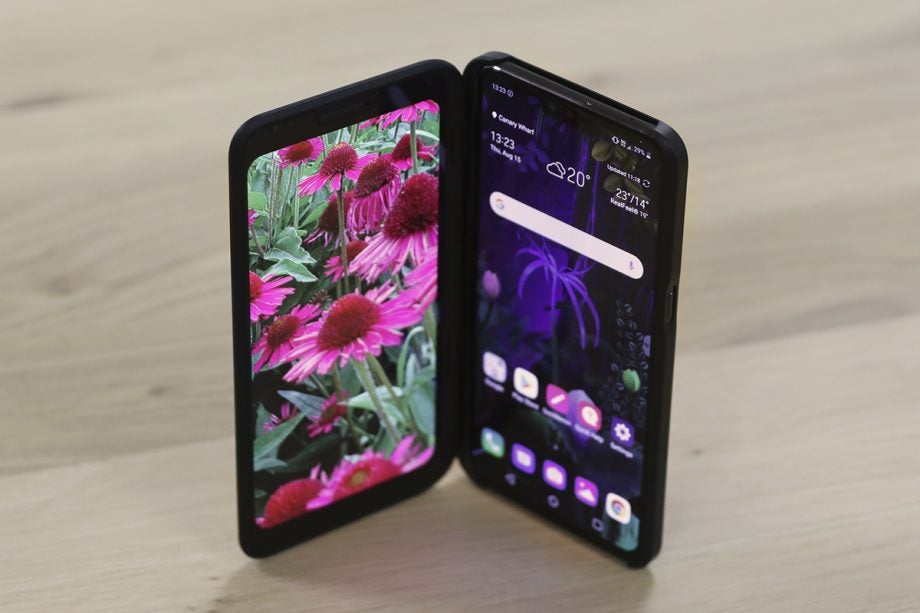
Sections
- Page 1 LG V50 ThinQ Review
- Page 2 Camera Review
- Page 3 Battery Life Review
- Page 4 Performance Review
- Page 5 Screen Review
The LG V50’s display customisations are a tinkerer’s dream
- The LG V50 features an identical 6.4-inch FullVision OLED to last year’s V40
- It offers exceptional customisation over the viewing experience and offers both HDR10 support and strong gamut coverage
- The secondary display of the LG Dual Screen accessory is good but can’t compete with the phone’s display when it comes to resolution and viewing angles
With such incremental hardware, LG felt it needed to entice potential buyers with the option of a secondary detachable display that turns the LG V50 into a faux foldable. Instead of doubling up on the well-specced panel used by the phone itself, LG chose to use a slightly smaller and inferior Full HD+ OLED panel.
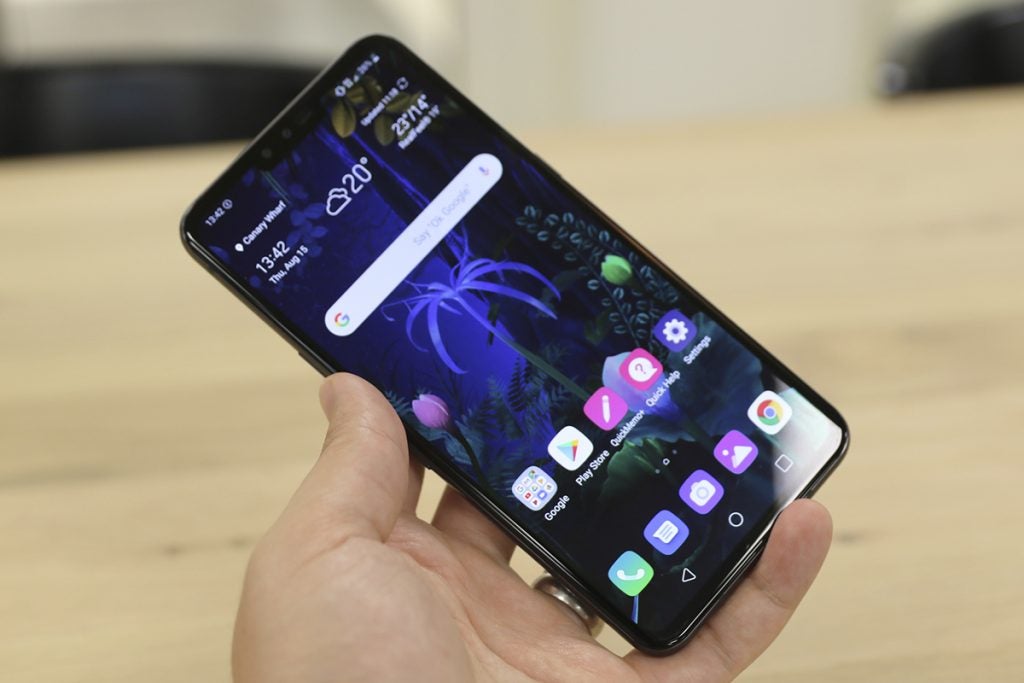
Brightness seems comparable to the phone’s native display and, thanks to the continued use of OLED tech, it also offers similarly vibrant colours, with great contrast. Where the LG Dual Screen’s panel falls down is with viewing angles, with notable brightness drop-off that the V50’s primary display doesn’t suffer from.
The fixed angles at which you can position the screen at also pose a problem from both a viewing and an ergonomic standpoint, particularly when gaming.
As a result, while the LG Dual Screen accessory has its merits, for the most part, it’s an awkward addition that only certain users will truly feel the benefit of.
Related: Best phone 2019
Clapping eyes on the LG V50’s own FullVision screen is a markedly different experience. It’s notably sharper, boasting a 3120 x 1440 resolution, resulting in an impressively-crisp 538ppi (pixels per inch). Just as with last year’s LG V40, it’s an expansive 6.4-inch 19.5:9 panel with a notch occupying about one-third of its top edge.
LG has made sure that it offers capable maximum brightness, great viewing angles and support for standards like HDR10, as well as a gamut of dedicated colour profiles, plus some impressively detailed customisation controls, right down to independent red, green and blue channel sliders.
On to the benchmarking…
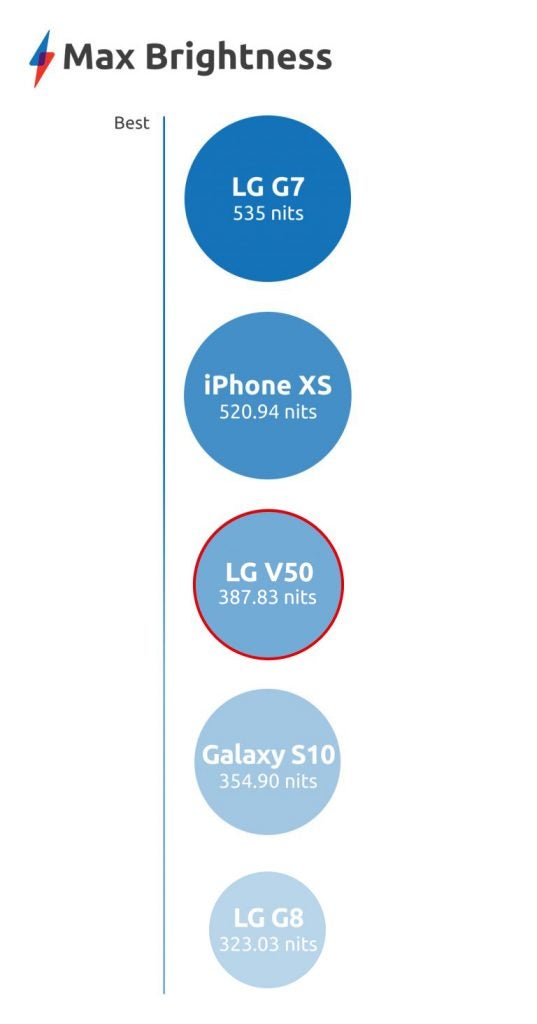
The V50’s maximum brightness outpaces the LG G8 and the Samsung Galaxy S10 but doesn’t come close to the top of the pile, falling short of its LCD-toting predecessor, the LG G7 – currently the brightest phone we’ve tested.
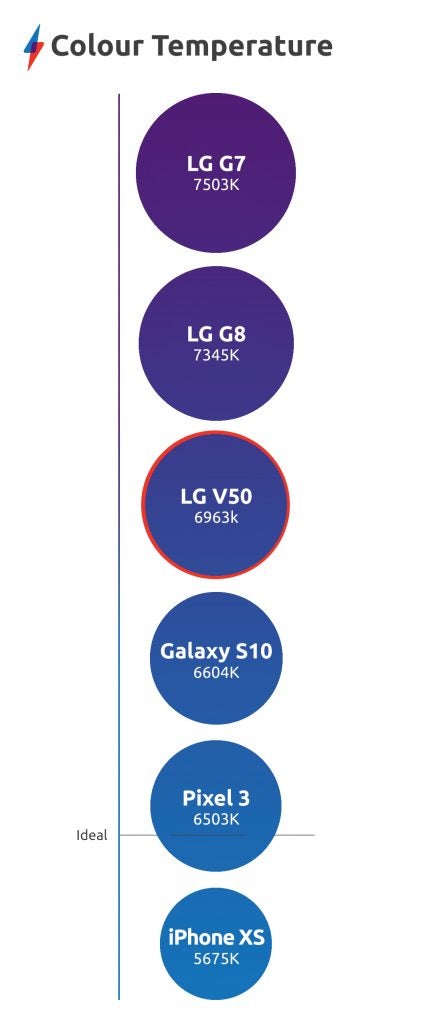
While it’s easy enough to tweak within the phone’s robust display settings, the V50 naturally errs towards offering a cooler viewing experience than most phones.
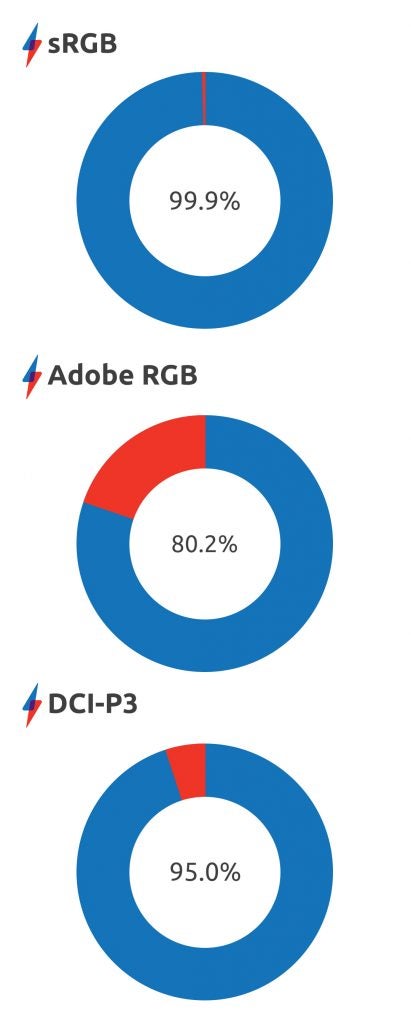
Gamut coverage is strong, based on the out-of-box display setup, but isn’t quite as accurate as the G8 with regards to both Adobe RGB and the DCI P3 colour space.
